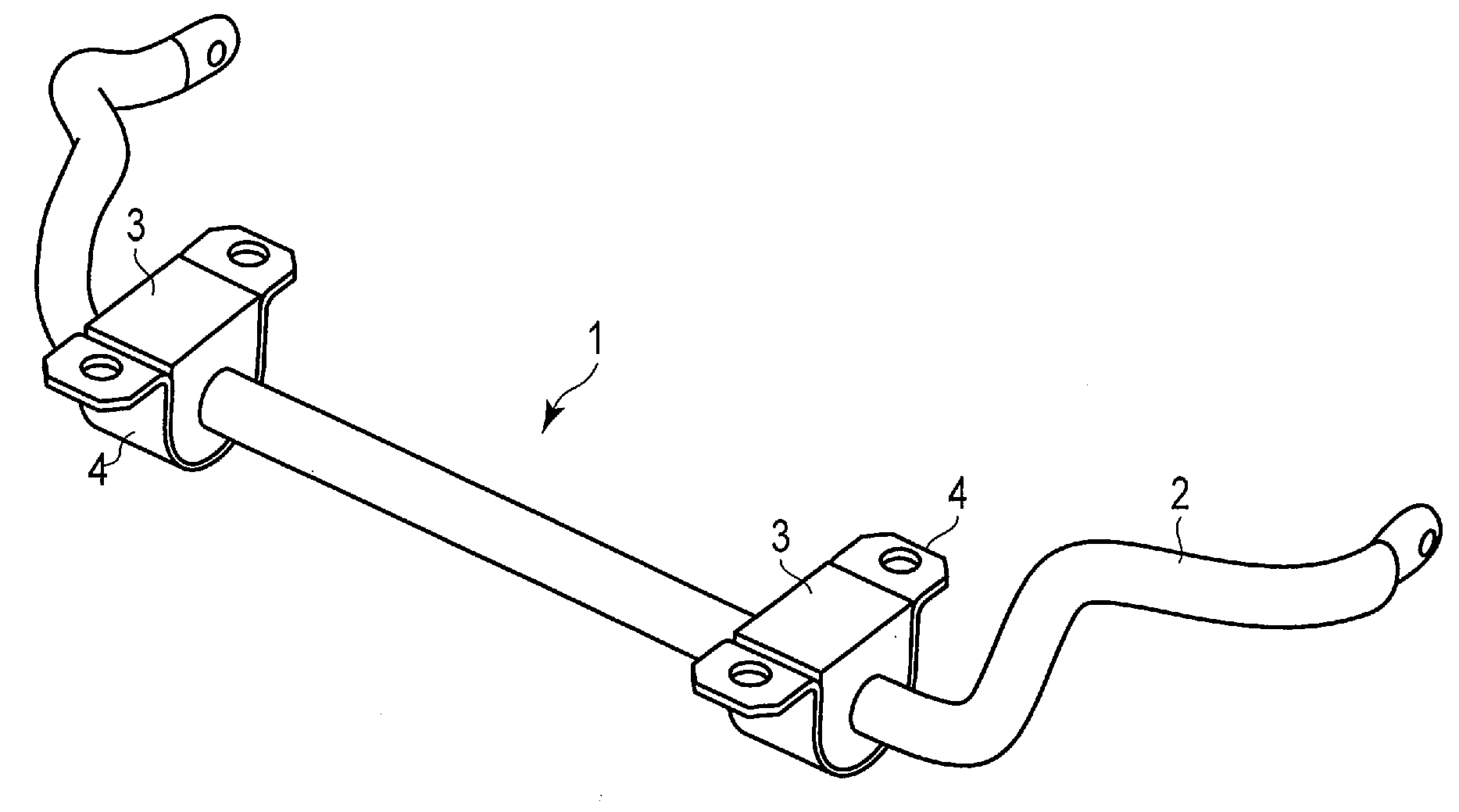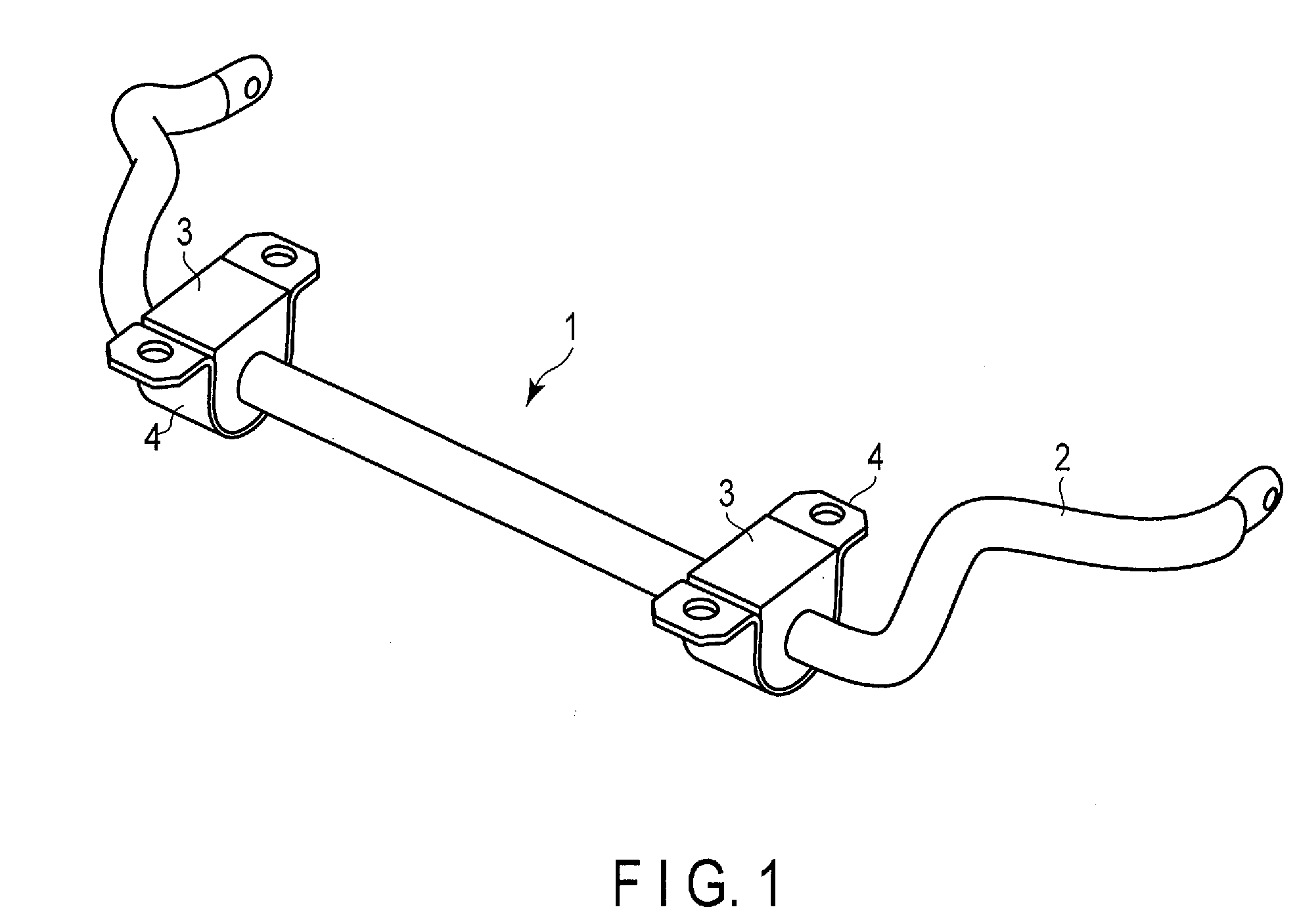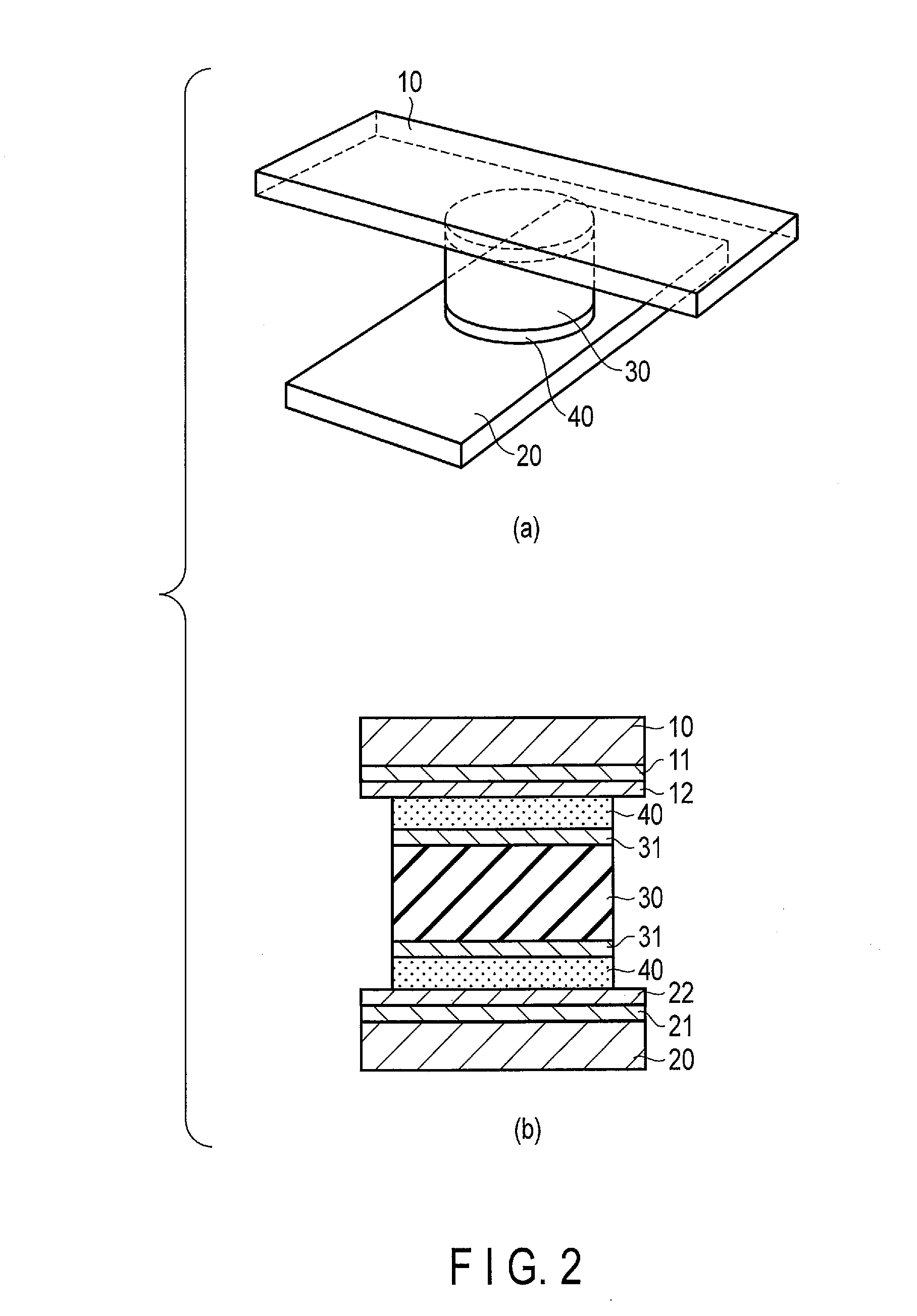Bush- and bracket-integrated stabilizer bar
- Summary
- Abstract
- Description
- Claims
- Application Information
AI Technical Summary
Benefits of technology
Problems solved by technology
Method used
Image
Examples
example 1
[0050]The first steel member was provided and its surface was painted with amine-based curable epoxy paint. The second steel member was provided, and its surface was painted with amine-containing cationic electrodeposition paint. Further, a disk-shaped natural rubber with Shore hardness Hs of 60 was provided. Surfaces of these members were surface-treated with a 5% trichloroisocyanuric acid solution in ethyl acetate, thereby surface treatment layers were formed. Then, these surface treatment layers were bonded with a thermosetting epoxy adhesive containing 100 parts of EPICLON EXA835 (a trade name of a product of DIC Corporation) which is a bisphenol F type epoxy resin and 20 parts of FUJICURER FXR1000 (a trade name of a product of Fujikaseikogyo Inc.) as a curing agent, thereby adhesive layers were formed. Thus, a test piece shown in FIG. 2 was produced.
[0051]As a result of performing a tensile test on the test piece, the rubber was broken. The strength was 68 MPa. As a result of a...
example 2
[0053]Disk-shaped natural rubber with Shore hardness Hs of 85 was used. A test piece was produced with other conditions being the same as those in Example 1.
[0054]As a result of performing a tensile test on the test piece, the rubber was broken, and the strength was 84 MPa. As a result of a torsion test for a trial-manufactured bush- and bracket-integrated stabilizer bar, the rubber was broken, and the strength was 172 N·m.
[0055]Further, as a result of performing a torsion test after immersion in hot water, a portion of the rubber was internally broken, and in the remaining portion, the adhesive was broken in a range wider than the case of Example 1. The breaking of the adhesive was caused by deterioration, and the adhesion strength at that time was 136 N·m.
example 3
[0056]Disk-shaped natural rubber with Shore hardness Hs of 55 was used. A test piece was produced with other conditions being the same as those in Example 1.
[0057]As a result of performing a tensile test on the test piece, the rubber was broken, and the strength was 54 MPa. As a result of a torsion test for a trial-manufactured bush- and bracket-integrated stabilizer bar, the rubber was broken, and the strength was 172 N·m.
[0058]Further, as a result of performing a torsion test after immersion in hot water, the rubber was broken in most of the adhesion region, and the adhesive was broken in a very limited region. The breaking of the adhesive was caused by deterioration, and the adhesion strength at that time was 119 N·m.
PUM
 Login to View More
Login to View More Abstract
Description
Claims
Application Information
 Login to View More
Login to View More - R&D
- Intellectual Property
- Life Sciences
- Materials
- Tech Scout
- Unparalleled Data Quality
- Higher Quality Content
- 60% Fewer Hallucinations
Browse by: Latest US Patents, China's latest patents, Technical Efficacy Thesaurus, Application Domain, Technology Topic, Popular Technical Reports.
© 2025 PatSnap. All rights reserved.Legal|Privacy policy|Modern Slavery Act Transparency Statement|Sitemap|About US| Contact US: help@patsnap.com



